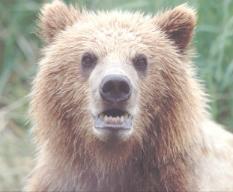
TrailsFest serves up a jam-packed day of outdoor adventure.
Event details:
TrailsFest 2008
Saturday, July 19, 9am – 4pm
Rattlesnake Lake, North Bend
www.trailsfest.org
This outdoor extravaganza features clinics on everything from wilderness first aid to hiking with kids to backcountry cooking. Take a guided hike, tie a fly on, or climb a rock wall. Try out a new s’mores recipe, or hang out with packgoats. Visit the GBOP booth and say "hi", or the dozens of exhibitors, including gear companies and outdoor groups. I will be giving a "Living with Bears" talk at 2:00 at the Cedar Watershed Education Center. It's all at TrailsFest!
Been wanting to explore the North Cascades? Attend a clinic with Craig Romano, author of Day Hiking – North Cascades published by Mountaineers Books. Learn how to whip up a tasty backcountry meal in no time from the author of Freezer Bag Cooking. Want to be a responsible hiker with your dog? Check out the clinic on hiking with dogs and trail etiquette. Wanting to try backpacking? Go to Hilleberg the Tentmaker’s clinic on smart packing and learn how to take less, still be comfortable and safe, and have lots more fun!
TrailsFest is presented every summer by Washington Trails Association. Sponsors for TrailsFest 2008 include Hilleberg the Tentmaker, KPLU, Green Trails Maps, REI, CLIF Nectar, Outdoor Research, Gregory, Chaco, Teko, Helly Hansen, Erin Baker's Wholesome Baked Goods, Freezer Bag Cooking, and Marmot Mountain Works.
TrailsFest is your passport to the great outdoors this summer, and admission is free!
To get to TrailsFest, take I-90 to exit 32, then turn right on 436th Ave SE. Follow this road 2.7 miles to Rattlesnake Lake.
Julie L. (Hayes) Hopkins - GBOP field organizer





